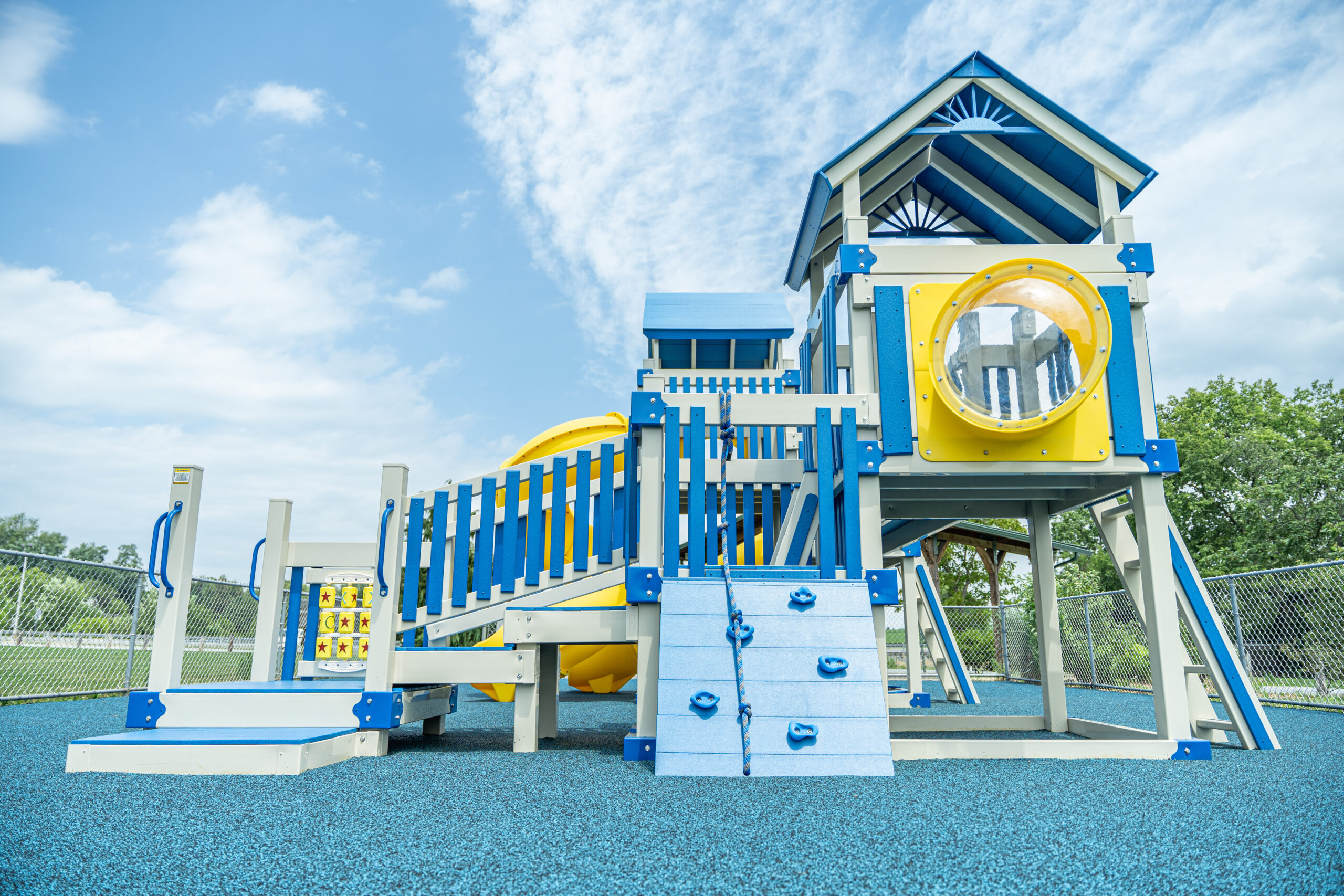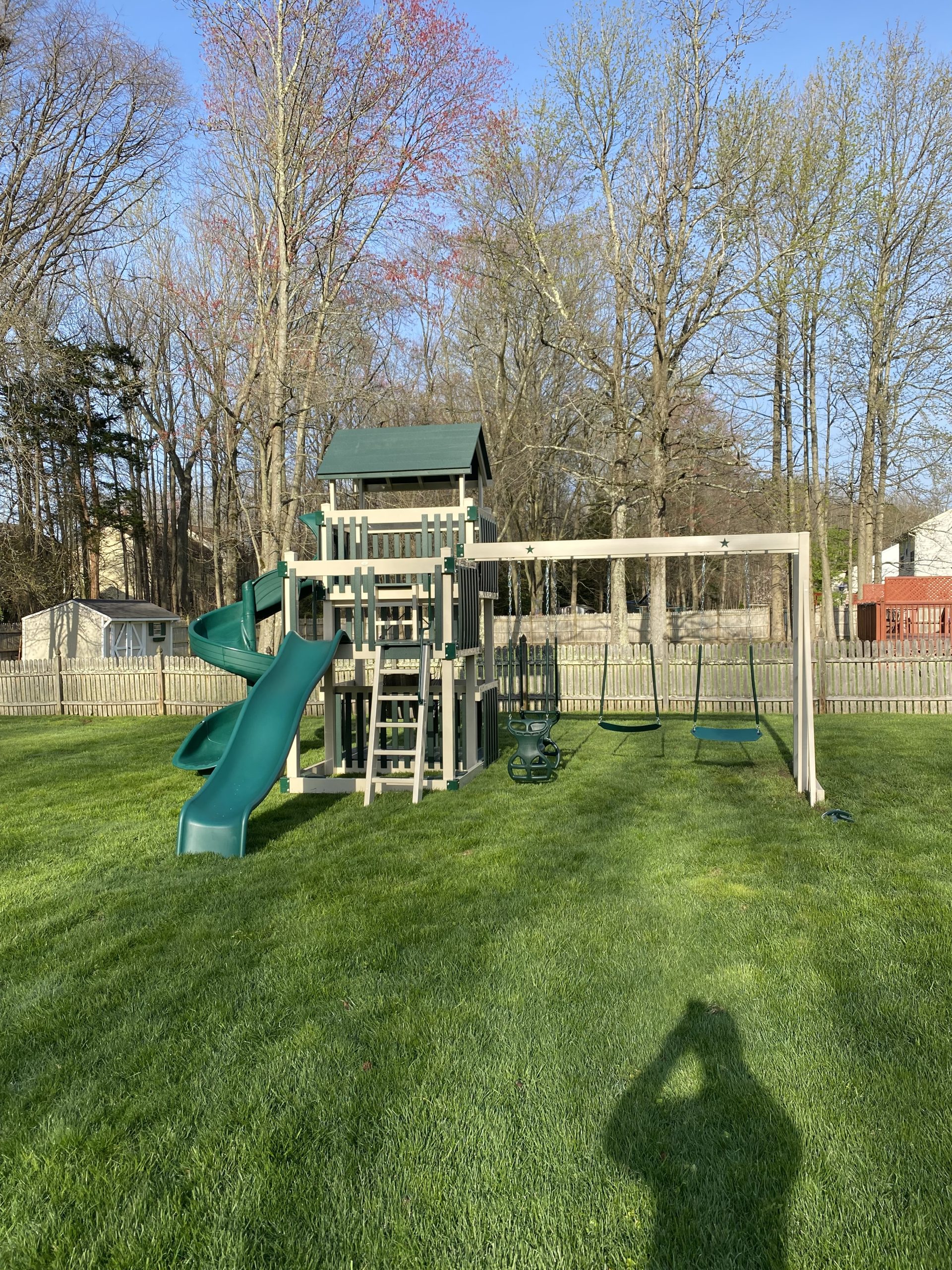Every child can fully participate in play activities regardless of physical or cognitive limitations thanks to the design of inclusive playgrounds, which cater to kids of all abilities. For instance, children who are visually or intellectually impaired can still access inclusive playgrounds and have fun. Since inclusive playgrounds are designed with the needs of all users in mind, nobody would feel that their abilities or interests are not welcome there.
These playgrounds encourage diversity, inclusivity, and accessibility while fostering a welcoming environment that allows kids of all skill levels to play together.
Beyond just being a place for children to play, inclusive playgrounds positively impact social attitudes, develop empathy, and improve the general well-being of communities. In this article, we want to discuss why inclusive playgrounds are vital. But before that, let’s see the components of an inclusive playground.
Components of an Inclusive Playground
- Sensory-rich details
The playground must to include games that appeal to many sensory sensitivities. This comprises tactile, vestibular, visual, and auditory sensors. - Zones
Zones in play areas encourage diverse skill engagement and provide specialized areas for children to retreat from noise or activity. - Social play
In addition to providing parallel and cooperative play, inclusive playgrounds should have imaginative play activities. Playing cooperatively entails teaming up to complete a game. Playing next to each other without disturbing each other is known as parallel play. - Unitary surfacing
The purpose of protective playground surfacing is to provide users with a shock-absorbing surface. Unitary and loose surfaces are the two primary categories of surfacing. Unitary surfacing is a better option for inclusive playgrounds because it makes it easier for wheelchair users to turn, pass one another, and access the activities. Wheelchairs and strollers have an easier time entering and navigating the playground thanks to unitary surfacing. - Fencing
An inclusive playground must have a fence to prevent the kids from wandering off. Now that we have defined an inclusive and what makes an inclusive playground, let’s discuss its benefits.
Benefits of an inclusive playground
1. It promotes equal play opportunities
Inclusive playgrounds offer various play options to accommodate different abilities and preferences. This guarantees that every kid can participate in activities that suit their interests and abilities Due to design constraints, traditional playgrounds may inadvertently exclude children with disabilities. Inclusive playgrounds strive to remove barriers so that kids of all abilities can engage in play without feeling excluded or restricted.
2. It provides fun, social environments.
Of course, playing with other kids is a sure way to help kids develop social skills, which can significantly benefit them in adulthood. Through social play, the kids can learn how to communicate their ideas, resolve conflicts, take turns, share, listen to others, etc. Inclusive playgrounds are a perfect place for social play. That’s because they create space for all children to come together and have fun.
Seesaws and merry-go-rounds are two common playground equipment intended for group activity. In addition to being fun, spinning and bouncing have a social aspect. Playground designers can place equipment appropriate for children of varying abilities close to each other and install group play equipment. Children of all abilities may interact more socially as a result of this.
3. Promotes physical activity and exercise
Kids need at least 2 hours of physical activity each day. Studies show that children are today not engaging in adequate physical activity as they should. This is attributed to the fact that they spend more time indoors glued to their electronic devices- smartphones, tablets, etc. And this leads to the kids being deprived of the importance of physical activity.
Fortunately, inclusive playgrounds are one of the best places to let children engage in physical activity to promote their growth and development. The playground can offer all kinds of games for kids of all abilities, thus improving their physical and mental well-being. Research shows that kids who receive sufficient exercise each day are at a lower risk of obesity, diabetes, heart disease, asthma, high blood pressure, etc.
4. Encourages creativity and innovation
In addition to the physical benefits of active play and engagement, inclusive playgrounds help kids develop their creativity. Playing allows kids to create a variety of skills, and these games inspire children to use their imaginations. Kids can establish their own rules and think creatively when they play, which gives them a sense of freedom.
As the number of children in the space increases, their combined stories become increasingly rich and diverse. Moreover, they can build upon one another’s scenarios and games to further expand the creative possibilities.
With inclusive playgrounds, the creative possibilities are practically endless. Imaginations run free in inclusive playgrounds, which provide kids with creative outlets and environments.
5. It offers educational value
Play provides educational opportunities in inclusive playgrounds. Kids can develop cooperation, communication, problem-solving, and empathy skills by participating in inclusive play activities.
Children who play inclusively are more likely to recognize and value diversity. It offers a natural setting for learning beyond the confines of the classroom about diversity, disability, and the value of inclusion.
6. It promotes independence
Inclusive playgrounds allow kids to engage in self-directed play, letting them select games that suit their skills and interests. This autonomy enhances one’s sense of empowerment and independence. Children may have varied comfort levels and preferences depending on their abilities. Children who play in inclusive environments are likelier to explore and choose activities that suit their comfort levels and particular preferences.
Final thoughts
Inclusive playgrounds are essential for promoting a culture that is accessible, understanding, and accepting. These playgrounds support social skills, empathy, and a feeling of community and offer a space for physical play. Building more inclusive playgrounds is an essential step toward creating a world where all children, regardless of ability, can play, learn, and grow together as communities continue to recognize the value of inclusivity. Partner with Swing Set Nation to plan your inclusive playground
At Swing Set Nation, we’re committed to helping communities establish inclusive playgrounds to promote inclusivity. We don’t want any child to be left out due to their ability and interest limitations. So, if you want to build an inclusive playground in your community, we at Swing Set Nation are the right people to talk to. We have an array of inclusive playground equipment constructed with high quality materials and craftsmanship. Contact us today to partner with us or learn more about our offerings!





